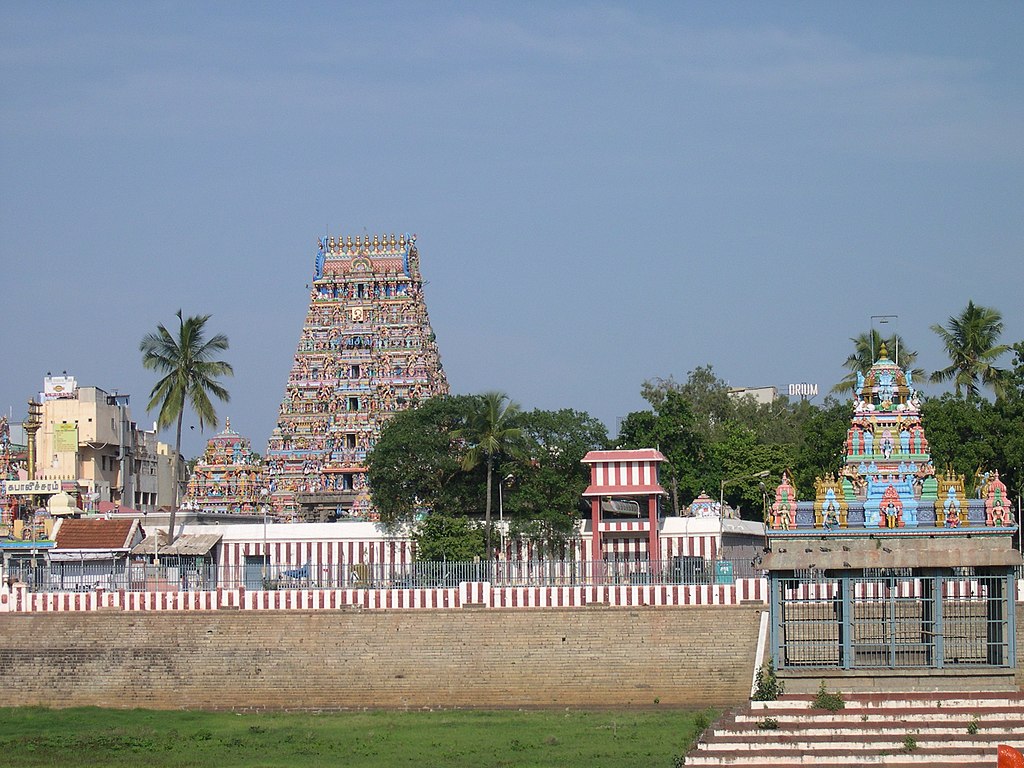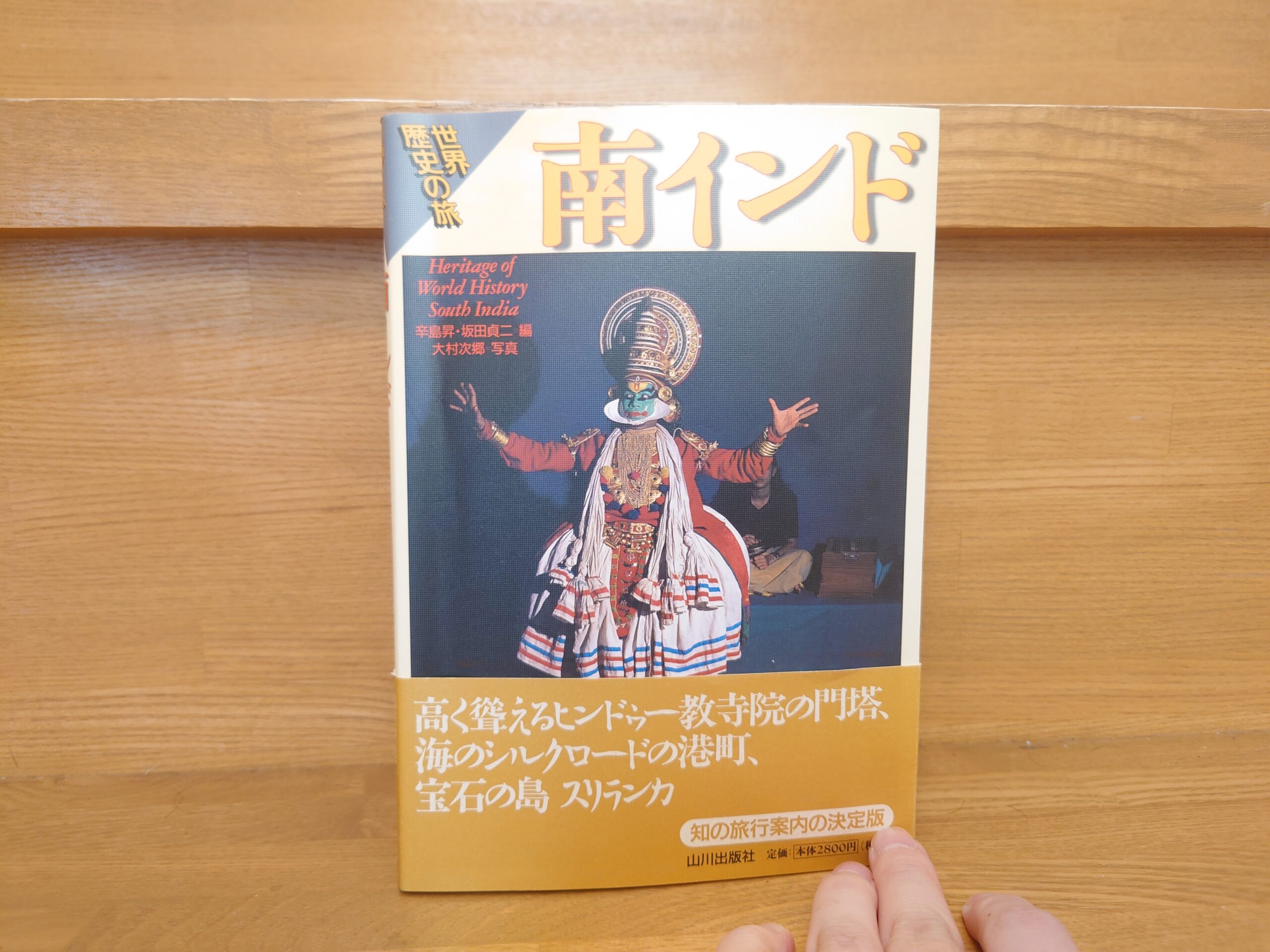Summary and Comments on "World History Travels in South India" edited by Noboru Karashima and Teiji Sakata - full of photos! Recommended for learning about Chennai and other unique architecture and culture that differs from North India!
The book introduced here is "Sekai Rekishi no Tabi: South India" edited by Noboru Karashima and Teiji Sakata, published by Yamakawa Shuppansha in 1999.
Let's take a quick look at the book.
The gorgeous hues of saris. The eternal flow of the Ganges. A trip to India is filled with a mysterious charm that cannot be found in Japan. The source of this fascination lies in "history. Many different ethnic groups have come and settled in India and built up their culture over a long period of time. The Dravidian culture that remains in South India is different from the Aryan culture of North India, and shows us an unknown side of India. The towering towers of Hindu temples, port cities along the Silk Road by the sea, and the original curry cuisine are also attractive.
AmazonProducts Page.

This work, "World History Journey: South India," is a recommended guidebook for South India, which has a different culture from North India.
The most unique feature of this book is that it is full of photographs. As you look at the wonderful photographs and trace the history of South India, you will definitely want to visit the country yourself.
In the "Foreword" of this book, the author says the following. It is a bit long, but I will read it carefully because it is a section that clearly summarizes the characteristics of South India.
The image that Japanese people have of India is very diverse, including "land of the birth of Buddha," "land of mystery," "hot country," "economically underdeveloped country," and so on. When we travel to India, we also feel that it is a completely different country from Japan. I am overwhelmed by the feeling that these countries are the origin of human life, both good and bad. As a result, you may become absorbed in the experience or, in some cases, you may want to escape and return home. Where does this weight come from?
It is the weight of the 5,000-year history of Indian culture. The phrase "unity in diversity" is often used to describe India, but the fact that India has many languages and ethnic groups, and that "unity" was born among them, and that there are so many ethnic groups in India, is itself the result of its 5,000-year history. If you wonder why you are attracted to or dislike India, you must know its history.
This book is a "travel" and "history" guide to India. Part I tells the history, and Part II tells the journey. However, the reader may start from either part. If you are a history buff or have already traveled in India, you can start with the history. If not, he can travel around India while reading Part II, which describes the towns and ruins. But as you travel, you will definitely want to read the history part. That is the journey of India.
The aim of this book is to let readers understand India through a back-and-forth movement between "history" and "travel" in this way. That is the meaning of the book's blurb, "A Travel Guide to Knowledge. The authors of Part II are up-and-coming researchers with extensive local life experience. The authors of Part II are up-and-coming researchers who have lived in the area and will share with readers their impressions of the towns they lived in and the sites they visited.
The most distinctive feature of this book is the division of Indian history and travel into "North" and "South. Looking at the distribution of languages, four different language systems are found in the Indian subcontinent, but broadly speaking, Aryan languages are spoken in North India and Dravidian languages in South India. The former, as a member of the Indo-European language family, is connected to European languages, while the Dravidian languages are completely different from them.
The natural landscapes of northern and southern India are also quite different. While the north has winter and continental landscapes, south India is a land of everlasting summer, with the sparkling Indian Ocean just beyond the tips of the palm fronds. Beyond the palm fronds lies the shimmering Indian Ocean, and the jeweled islands that line it. The history and travel of Sri Lanka are also included. I hope readers will fully enjoy the charms of North India, South India, and Sri Lanka, as well as the "cultural unity" created by all of them.
One of the characteristics of South India is Hindu temples with soaring towers. These include the four-pyramidal shikhara (roof) of the main temple at the Great Shiva Temple in Tanjavur, the four-sided gopuram (gate tower) at the Meenakshi Temple in Madurai, and the Hoysala style temples in the Deccan, whose walls are covered with detailed carvings. It is a symbol of the world of South India. The music of the musicians that accompanies the evening prayers in these temples is a thrill to our hearts.
South India is also the world of the Silk Road by sea. The ancient port of Poduche, where Roman ships came, now lies quiet, but the medieval port of Kochi, visited by Arab and Chinese ships, still bustles with the pepper trade. The tombstone of Vasco da Gama still remains in Cochi. South India is the birthplace of pepper and other spices sought by the world, and its market is the birthplace of curry cuisine using spices.
If you travel to South India, you will find that it has a different charm from North India. However, just as curry has become the cuisine of the whole of India, India is diverse, and within this diversity there is unity. The "key" to understanding this lies in history. I would like readers to travel around the world of India with that key in their hands.
Yamakawa Shuppansha, Noboru Karashima and Teiji Sakata (eds.), World History Travels in South India, P1-2.
When we think of India, we tend to think of one India, but India is huge! (lol)
Just as the Kanto and Kansai regions have different cultures in Japan, India has its own culture in the north and south, or even in all directions.
This book will give you a feel of South India.
The book is full of photographs, making it a good introduction to South India.
Why not pick one up?
The above is "World History Travels in South India" edited by Noboru Karashima and Teiji Sakata - Full of photos! Recommended for learning about the unique architecture and culture of Chennai and other places in South India that are different from those in North India! This is a good way to learn about the unique architecture and culture of Chennai and other cities in South India that differ from those in North India.
Click here to read the previous article.
Related Articles





































